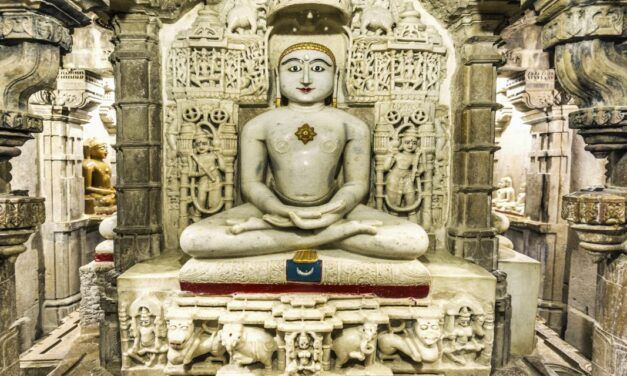At 7:30 a.m. every Saturday for the past eleven years, a Yoga Ministry is held for members of Trinity United Church of Christ in Chicago (the church Senator Barak Obama attended for two decades).34 Yoga has been embraced as an edifying practice in many Roman Catholic and mainline Protestant churches since the 1970s. For example, the late George A. Mahoney SJ, who authored several books on Catholic spirituality, wrote in 1976:
The ultimate worth of any technique must be measured by the fruit produced. Hence no Christian ought to condemn out of hand any technique, be it yoga, the use of music and prayer, chants, Silva Mind Control, Arica, T.M., or whatever unless for that person it has not been a help but a definite hindrance to prayer. A technique has no meaning unless we ask the question: “How is it being used? What are the fruits that come from such use? Does it help us or others pray with greater consciousness, beyond the habitual superficial level of controlled discursive prayer?”35
Acceptance of yoga as both spiritually and physically beneficial has surfaced in evangelical churches only over the past five to six years.36 This new movement should be differentiated from the unquantifiable but probably large number of evangelicals who for many years have practiced hatha yoga merely for its physical benefits, either believing that it is religiously neutral or confident that they can withstand its Eastern religious influences. The latter would only describe what they practice as yoga, while the former claim to be practicing “Christian yoga” or some other equivalent term.
In 2005 Time magazine described this trend as “a fast-growing movement that seeks to retool the 5,000-year-old practice of yoga to fit Christ’s teachings. From Phoenix, Ariz., to Pittsburgh, Pa., from Grand Rapids, Mich., to New York City, hundreds of Christian yoga classes are in session. A national association of Christian yoga teachers was started in July, and a slew of books and videos are about to hit the market.”37
Those books and videos have since been published. The most significant titles are Yoga for Christians by Susan Bordenkircher (W Publishing Group, 2006) and Holy Yoga by Brooke Boon (Faith Words, 2007). Bordenkircher, who previously had taught power yoga as a Christian, created her Outstretched in Worship classes, which combine yoga with Christian faith, in 2001. She developed a video ministry the following year. Boon had previously been a yoga teacher and, after her conversion to Christ in 2001, she immediately began to weave her new faith into her yoga practice through insights she attributes to the Lord. She has built Holy Yoga into “a worldwide ministry that includes classes, teacher training, and audiovisual resources….”38
Both Bordenkircher and Boon acknowledge their profound indebtedness to Nancy Roth, author of An Invitation to Christian Yoga (Seabury Books, 1989). Roth is an Episcopal priest with “an ecumenical ministry in spirituality.”39 She clarifies that “while my own journey has been greatly enriched by the wisdom of other traditions, most notably the mystical traditions of the east such as the one in which yoga was born, my particular way is the Christian way.”40
Roth explains how this Christian approach to yoga first developed: “The period of relaxation and visualization at the end of class became for me a doorway into prayer. It did not matter that we had chanted ‘Om‘ or that the exercises had Hindu names….The One I encountered, as I lay on the gym floor with my body relaxed and my mind and spirit attentive, was the God I knew in Christ Jesus.”41 She concluded that “there needed to be a new Christian asceticism that respected the integration of body and mind and reflected both the newest research in psychology and physiology and the wisdom of other, even more ancient spiritual traditions.”42
Roth’s words appear to reflect an inclusivist theology that is common in mainline churches such as the Episcopal church. Inclusivism holds that salvation is through Jesus Christ alone, but Christ’s salvation can extend even to those who do not consciously believe in Him, imparting to them gifts of grace or spiritual riches that can benefit those of other faiths, including Christians.43 Bordenkircher and Boon seem to be evangelical and more theologically conservative than Roth, but Roth’s interfaith exploration and synthesis of East and West laid the conceptual and practical foundations for Christian yoga, and the marks of her influence are evident throughout the movement.
After becoming accustomed to arguing that yoga is inherently a spiritual practice and that Christians run a spiritual risk in taking classes at the local yoga studio, I was surprised to find that Bordenkircher and especially Boon agree with me.44 Where they differ from Christian critics of yoga such as me is in their belief that yoga can be redeemed and made a holy practice to the Lord. They maintain this, furthermore, without revamping yoga into something essentially different than what we find in the Eastern varieties: there are the same postures, breathing exercises, and-to a significant extent-meditation techniques.
What makes their versions of yoga Christian? For all advocates of Christian yoga the answer is the same: intent. They are worshiping the Triune God of the Bible throughout the practice, offering their bodies to Him as a “living and holy sacrifice” (Rom. 12:1). The background music has Christian rather than Hindu associations, although it is similarly conducive to meditation. They have given several of the standard asanas Christian significance, renaming some of them (e.g., for Roth, the Sun Salutation becomes the Son Salutation). They associate pranayama with the Holy Spirit (since Spirit is derived from the Hebrew word for breath) or with the creative power of God. Instead of using the names of Hindu gods as mantras in their meditation practice they repeat short Bible verses, biblically based positive affirmations, or chants from Christian mystical traditions. Their belief is that as long as yoga is practiced as “body prayer” to the living God, with the mind constantly focused on Him, the Christian runs no risk of committing idolatry and the Devil has no room to move.
The kind of meditation practiced in the Christian yoga movement is called centering prayer or contemplative prayer, which has its roots in Catholic mysticism but is also practiced by mainline Protestants and is rising in popularity among “emerging church” and other evangelicals. Roth writes that “it involves a paradox: the paradox that attention to the inmost self is attention to God….focusing the mind and the heart in the practice of meditations is a means of exploration both of our own nature and of the mystery of God.”47
Thus far in this series we have surveyed yoga both in its original Eastern and in its contemporary Western contexts. We are now prepared, in the remainder of this installment and in all of part three, to begin formulating a comprehensive Christian response. If we as Christians find ourselves in a culture in which yoga is becoming institutionalized, we must first determine whether yoga in any form-from classic raja yoga to Westernized hatha yoga to novel “Christian yoga”-can be truly compatible with Christian faith.








